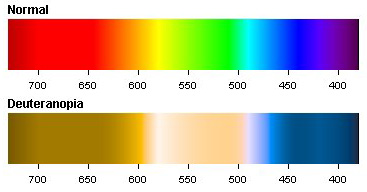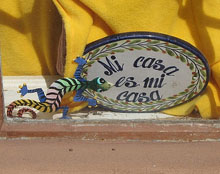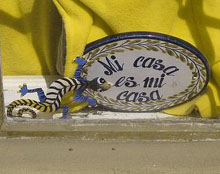To be colorblind is one thing. To know which type of color blindness you are suffering from is something different. Particularly red-green color blindness, the most common form of color vision deficiency, has several subtypes which are not easily distinguishable.
Yesterday I received the following question which I would like to quote here and hopefully give you some answers thereafter.
My husband is red-green colorblind, but we don’t know which type. What is the best way to go about finding out protanopia/protanomaly or deuteronopia/deuteranomaly? We’ve seen some of the test on the internet, but what do you recommend?
Maybe you are in the same position as the person described above; so let us dive in and find some answers for you.
Before I give you some advice on the how and why I would like to explain the technical terms above and set them into relation to red-green color blindness.
Red-green color blindness terminology
There are two different axis which you have to take into account. The first axis distinguishes if you have problems with your long (L) or medium (M) wavelength cones. The L-cones are red sensitive and are—if malfunctioning—the source of red-blindness (protanopia) and red-weakness (protanomaly).
On the other side are the M-cones, which are more sensitive to green colors. If your M-cones are absent or not working properly you are either green-blind (deuteranopia) or green-weak (deuteranomaly).
The other axis tells you about the severity of your color vision deficiency. Either you are a dichromat (protanopia/deuteranopia) and therefore you have only two different types of color receptors in your eyes. Or you have three different types of color sensitive cones, like somebody with normal vision, which is called anomalous trichromacy (protanomaly/deuteranomaly).
Finding out your subtype of color blindness
If you want to know for sure on which sides of the axis your color blindness sits, you have to go to a doctor for a check-up. But not just any doctor can do the job for you. Before your consultation you might like to check the following two points:
- Your doctor should be an eye specialist.
- He should have different possibilities to test for color blindness (check this in advance).
There are different color blindness tests available and every test has its advantages and weaknesses. If you put everything just on one test you might get a wrong conclusion. The list below gives you an impression of what tests could be available when taking your tests at an eye specialists place.
- Pseudoisochromatic plates like the well known Ishihara plates tests.
- Anomaloscope; Neitz-, Nagel- or also Heidelberg Multi-Color-Anomaloscope.
- Lantern tests as the Farnsworth LT or the Holmes-Wright LT.
- City University tests.
- Arrangement test like the well known D-15 Farnsworth or the Farnsworth-Munsell test.
Every single test can play its part when you want to find out which subtype of color blindness affects you. Different tests together will give you an overall picture and a very good and reliable result when properly accomplished.
If you have your reasons not to go to an eye specialist you can try to do some color blindness tests by yourself. In that case you have to know, that these results will never be as reliable as when you consult your doctor. You also may not have the possibility to do many different tests like the ones listed above, as they are not publicly available.
There are many places where you can buy such tests like the Ishihara plates and accomplish the test at home. But this is usually way to expensive and as you are not trained in interpreting the results I don’t recommend it to you.
On the other side you can take some online color blindness tests. Before you head on, take your tests and think you know what subtype of color blindness is your one, let us step back and have a look at the difference between an online and a hardcopy test.
- Online tests are often scanned images. Because printed and display colors are very different and each scanner has its own color calibration, this images can look quite differently on screen. Therefore the results would not be the same and are less reliable.
- Every computer display is different. So if you take an online color blindness test using different displays the result could also vary.
- A computer display has a so called gamma correction. If contrast and brightness of your monitor or not very well adjusted this could also alter your test results.
Being aware of all that you can head on and try out some tests to find out more about your color vision deficiency. To get a more detailed analysis of your red-green color blindness I recommend you the three following steps.
- Step 1: Take the Ishihara plates color blindness test and if this one is not enough check out the other source about Ishihara plates test. Through this pseudoisochromatic plates test you get an overall feeling of your color blindness but not a very accurate result.
- Step 2: Take the color blindness test based on confusion lines. There are three different tests (protan/deutan/tritan) to choose from and when you write down your results you get a good understanding of which subtype of color blindness gives you the biggest problems.
- Step 3: Take the D-15 Farnsworth Arrangement Test. These results will tell you more about the severity of your deficiency. If you have real problems accomplishing the D-15 test you are most likely a dichromat. Otherwise you supposably have a anomalous trichromacy.
Combining together the results of those color blindness test should give a more accurate knowledge about your color vision deficiency. Through step 2 you should be able to place yourself on the red-green axis. Either you are more on the red side (protanopia/protanomaly) or on the green side (deuteranopia/deuteranomaly). But be aware, if you have problems with one of those tests you will also have some problems with the other one, because the confusion lines of red- and green-blind or -weak persons are very close together.
Step 3 tells you more about the severity. If you are a dichromat and therefore have only two distinct types of color receptors in your eyes, you will have severe problems to accomplish the task arranging the colors in the right order. Otherwise you most likely have some weak form of color blindness. This shows you your position on the second axis.
Putting together step 2 and step 3 should give you a quite good overall impression of your color blindness. But as I said, there are many limitations to be taken into account and no online test will ever replace a consultation at the eye specialist.
I hope I could reveal some insights about red-green color blindness and help you to find out more about your color blindness in detail. If you did like this article you can either bookmark it with the button below or subscribe to my RSS feed to get fresh updates on color blindness.









